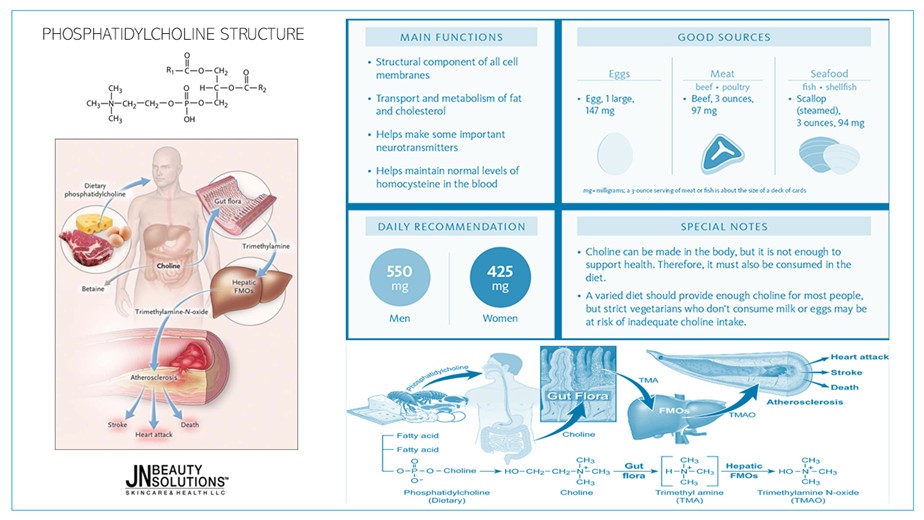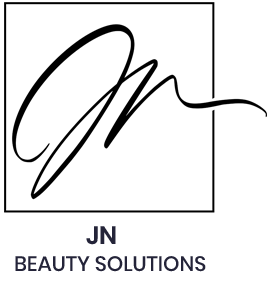WHAT IS PHOSPHATIDYLCHOLINE?
Phosphatidylcholine (PPC) is a phospholipid composed of choline, glycerol, phosphate, and fatty acids, and is a major structural component of all cell membranes. As a key constituent of the lipid bilayer, PPC plays a central role in membrane fluidity, cell signaling, lipid metabolism, and liver detoxification.
Although abundant in dietary sources like egg yolks and soybeans, IV administration of purified PPC provides therapeutic benefits for liver repair, cardiovascular health, fat emulsification, and cellular rejuvenation, especially in functional and integrative medicine.

MOLECULAR PROFILE
Chemical Formula (general structure): C₄₄H₈₇NO₈P
Molecular Weight: ~758–800 g/mol (varies by fatty acid composition)
Chemical Class: Glycerophospholipid
Solubility: Amphipathic (hydrophilic head, hydrophobic tail)
Biological Role: Membrane structure, emulsifier, lipotropic agent
Route of Administration: IV, oral, IM (IV preferred for systemic use)
HISTORICAL BACKGROUND
Phosphatidylcholine was discovered in the 1800s as a component of lecithin and later identified as a key element in cell membrane biology. In the 1950s–1970s, it was developed and used in Europe for liver support, lipid lowering, and atherosclerosis treatment. PPC has since been integrated into lipotropic IV therapies, anti-aging medicine, and non-surgical body contouring regimens.
MECHANISMS OF ACTION
- Cell Membrane Repair & Fluidity
PPC integrates into lipid bilayers, restoring membrane integrity, permeability, and signal transmission. - Liver Detoxification & Lipid Clearance
Acts as a lipotropic agent, mobilizing fat from the liver and improving bile flow and emulsification. - Choline Source for Neurotransmitter Synthesis
Supplies choline for acetylcholine production, supporting memory and cognitive function. - Emulsification of Fats (IV Lipolysis)
Breaks down stored fat deposits in adipose tissue by emulsifying triglycerides and promoting their metabolic clearance. - Anti-Inflammatory & Anti-Fibrotic Effects
Reduces hepatic inflammation and fibrosis in liver diseases (e.g., NAFLD, hepatitis, alcoholic liver damage). - Cardiovascular Protection
Helps reduce LDL cholesterol and supports endothelial function by repairing vascular lipid layers.
THERAPEUTIC & FUNCTIONAL INDICATIONS
Phosphatidylcholine IV therapy is used in:
- Fatty Liver Disease (NAFLD/NASH)
- Liver Detoxification & Hepatic Repair
- Hyperlipidemia / Cholesterol Management
- Fat Emulsification (aesthetic lipolysis protocols)
- Neurodegenerative Support (Alzheimer’s, cognitive decline)
- Atherosclerosis / Arterial Plaque Reduction
- Skin Rejuvenation & Anti-Aging
- Post-Chemotherapy Cellular Recovery
HEALTH BENEFITS OF PHOSPHATIDYLCHOLINE
- Supports Liver Regeneration & Detox Pathways
- Emulsifies Fat for Aesthetic Body Contouring
- Improves Lipid Metabolism & Reduces LDL Cholesterol
- Strengthens Cell Membranes Against Oxidative Damage
- Enhances Cognitive Function & Memory
- Reduces Inflammation in the Liver & Vascular Tissues
- Assists in Vascular Plaque Clearance
- Promotes Smoother, Healthier Skin through Membrane Renewal
COMMON IV DOSING GUIDELINES
Liver Detox & NAFLD: 500–1,000 mg | 1–2x/week
IV Fat Reduction (with L-carnitine) 1,000–2,500 mg | 1–2x/week (in protocol)
Cardiovascular & Lipid Support: 1,000–1,500 mg | Weekly or per protocol
Anti-Aging / Skin Rejuvenation: 500–1,000 mg | Weekly in combination IVs
Often combined with L-carnitine, Glutathione, Alpha Lipoic Acid, and B-complex vitamins in synergistic protocols.
SAFETY PROFILE & SIDE EFFECTS
PPC is considered safe when used under clinical supervision. It is naturally present in the body and well-tolerated. Possible Side Effects (mild/transient):
- Slight flushing or warmth during infusion
- Injection site discomfort
- Diarrhea or GI upset (more common with oral forms)
- Temporary fatigue or headache
🚫 Precautions:
- Caution in patients with soy or egg allergy (source-dependent)
- Avoid rapid IV bolus—infuse slowly over 30–45 minutes
- Monitor lipid panels and liver enzymes in long-term use
SYNERGISTIC IV COMBINATIONS WITH PHOSPHATIDYLCHOLINE
1. Fat Reduction & Metabolic Support
PPC + L-Carnitine + Arginine: Promotes fat mobilization, mitochondrial oxidation, and improved circulation.
PPC + Alpha Lipoic Acid + B-Complex: Enhances fat metabolism and antioxidant protection.
2. Liver Health & Detoxification
PPC + Glutathione + Taurine: Supports bile flow, liver regeneration, and systemic detox.
PPC + NAC + Vitamin C: Reduces hepatic inflammation and boosts glutathione production.
3. Neurocognitive & Anti-Aging
PPC + NAD+ + CoQ10: Enhances mitochondrial performance and cognitive clarity.
PPC + Ginkgo Biloba + Magnesium: Improves cerebral blood flow and memory in aging populations.
CLINICAL USAGE NOTES
- Reconstitution: Dilute in normal saline or D5W; avoid mixing with incompatible lipids.
- Storage: Store at 2–8°C; protect from light.
- Administration: IV drip over 30–60 minutes is preferred to avoid flushing.
CONCLUSION
Phosphatidylcholine (PPC) is a multifunctional phospholipid that supports cell membrane repair, liver detoxification, fat metabolism, and neurovascular health. Whether for aesthetic fat reduction, liver support, or anti-aging benefits, PPC plays a foundational role in functional IV protocols.
JN Beauty Solutions™ uses pharmaceutical-grade PPC in customized infusions designed for fat emulsification, liver healing, and cellular rejuvenation.
For personalized IV therapy development, professional use inquiries, or bulk ordering, please contact:
JN BEAUTY SOLUTIONS™

